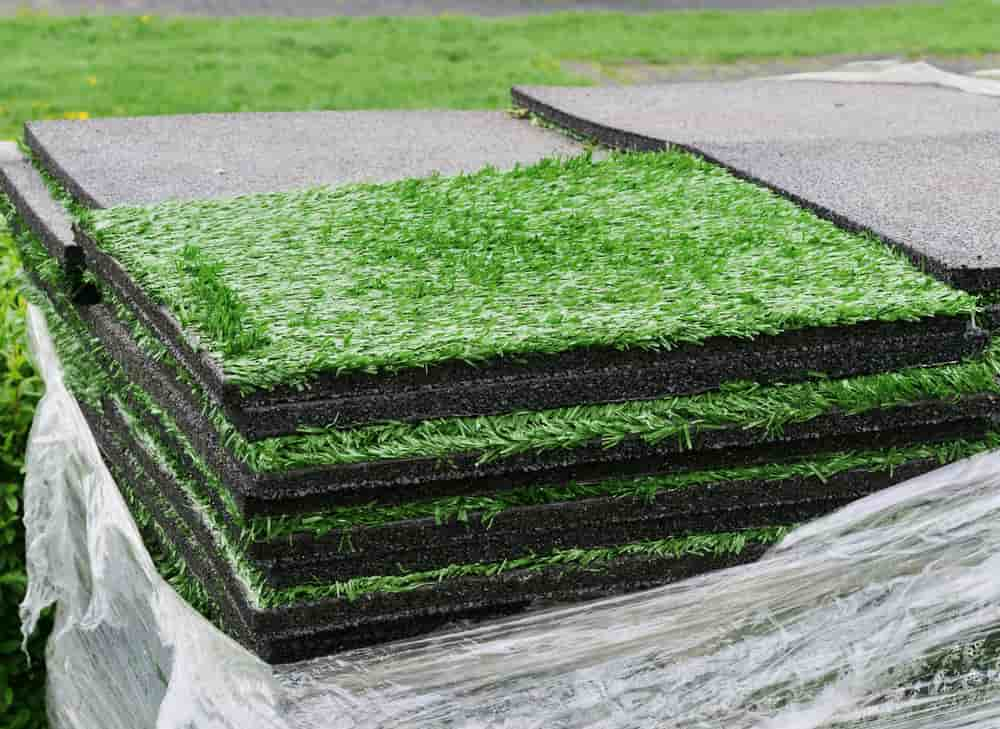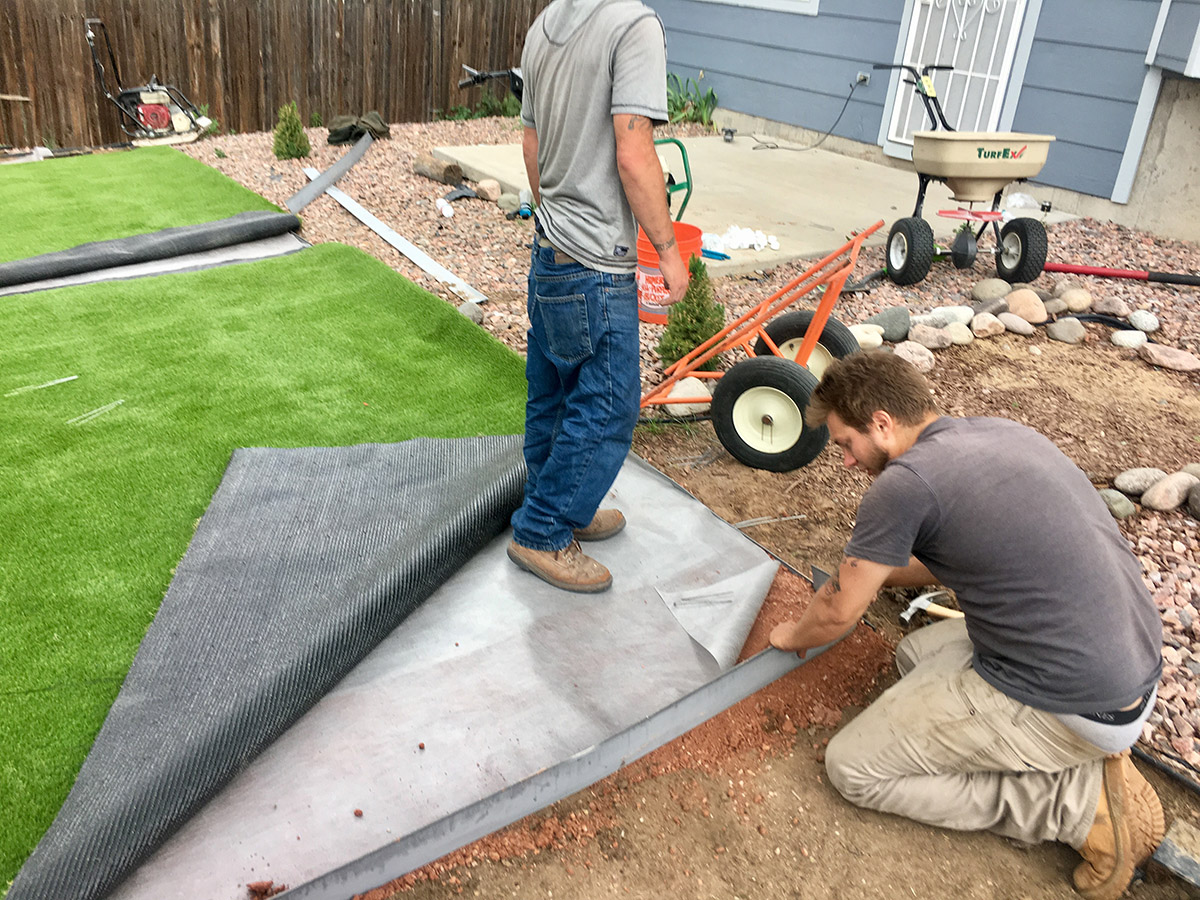Enhance Your Outdoor Space with Arizona Artificial Turf for a Vibrant Green Look
Enhance Your Outdoor Space with Arizona Artificial Turf for a Vibrant Green Look
Blog Article
Explore the Environmental Perks of Opting for Synthetic Grass Solutions
The adoption of fabricated grass options offers a compelling chance to resolve pushing ecological obstacles. By significantly minimizing water use and reducing the application of harmful chemicals, these alternatives not just advertise sustainable landscape design yet likewise secure neighborhood communities.
Water Conservation Benefits
One of the most significant advantages of synthetic grass is its capability to preserve water. In contrast, artificial lawn does not need watering, significantly minimizing the overall demand for water sources.
By eliminating the need for regular watering, artificial grass adds to lasting landscape practices and assists minimize the ecological impact of excessive water consumption. The preservation of water prolongs to the decrease of runoff, which can lead to soil erosion and river pollution.
In addition, the installation of synthetic grass enables house owners and municipalities to allocate water resources a lot more successfully, concentrating on important usages such as drinking water and farming. The shift towards synthetic grass not just advertises liable water usage yet additionally aligns with broader environmental goals focused on protecting natural deposits.
As neighborhoods progressively focus on sustainability, the water conservation advantages of synthetic grass provide a compelling case for its adoption in property and commercial landscape design jobs.
Decreased Chemical Usage
The shift to artificial grass considerably decreases the dependence on chemical treatments frequently used in natural lawn upkeep. Typical lawn administration commonly includes the application of herbicides, plant foods, and pesticides to advertise development and control parasites. These chemicals can posture risks to human wellness, regional wildlife, and the atmosphere, adding to dirt and water contamination.
On the other hand, synthetic grass eliminates the requirement for these dangerous substances. When mounted, it requires very little maintenance, mostly including normal cleaning and seldom infill replenishment. This decrease in chemical usage not just benefits the instant environment yet additionally adds to wider ecological security. By reducing the launch of artificial compounds right into the environment, synthetic grass promotes healthier dirt and water supply.
Moreover, the absence of chemical drainage related to synthetic lawn installments helps secure regional waterways from pollution, supporting water life and keeping biodiversity. Artificial turf companies phoenix. As communities progressively prioritize sustainable practices, choosing fabricated lawn offers a sensible option that straightens with environmental conservation goals. Via this shift, homeowner can take pleasure in lavish green areas without compromising ecological wellness, leading the way for an extra lasting future
Reduced Carbon Impact

In addition, the installation of artificial turf can lead to substantial water conservation. All-natural lawns require significant quantities of water for watering, which not just includes in the carbon footprint connected with water extraction and therapy however additionally strains local water resources. On the other hand, fabricated image source lawn needs minimal upkeep, needing no watering, thus considerably decreasing water usage and its connected power prices.
Additionally, the longevity of artificial lawn adds to its lower carbon impact. With a life expectancy of approximately 15 years or even more, the demand for frequent substitutes is reduced, causing much less waste and reduced power usage in production and taking care of typical turf choices. In general, synthetic turf provides a sustainable option for ecologically mindful landscape design.
Environment Conservation
Environment conservation is a critical consideration in the dispute over landscape design selections, especially when contrasting synthetic grass to natural turf. Natural grass yards commonly call for comprehensive upkeep, consisting of the use of pesticides, fertilizers, and herbicides, which can negatively affect local ecological communities. These chemicals can seep right into the dirt and waterways, harming native plants and fauna and interrupting regional environments.
Fabricated turf removes the need for harmful chemicals, therefore protecting close-by wild animals and maintaining the stability of surrounding communities. The installation of artificial lawn can lead to the conversion of previous grass areas right into more biodiverse landscapes, such as pollinator gardens or indigenous plant locations, which can support neighborhood wildlife.
Ultimately, the change to synthetic grass not only preserves water and lowers maintenance initiatives yet likewise fosters an extra harmonious relationship between human tasks and the native environment, advertising habitat preservation while doing so.
Long-Term Sustainability
Long-term sustainability is an essential consider assessing the advantages of artificial grass over standard yard yards. Among one of the most considerable benefits of synthetic grass is its durability; it can last as much as click site 15-20 years with very little upkeep, whereas natural yard requires regular reseeding and replacement. This long life decreases the need for consistent sources, such as water, plant foods, and chemicals, which are vital for useful reference preserving a healthy and balanced turf lawn.
Additionally, synthetic grass adds to a decrease in carbon discharges connected with grass treatment equipment. Traditional lawns commonly call for gas-powered lawn mowers, leaners, and blowers, all of which add to air pollution. Artificial turf companies phoenix. On the other hand, synthetic grass removes the demand for such equipment, promoting a cleaner atmosphere
Furthermore, the manufacturing of synthetic grass significantly makes use of recycled products, enhancing its sustainability profile. As producers embrace eco-friendly methods, the environmental footprint of synthetic grass remains to lessen.

Conclusion
The adoption of fabricated turf solutions provides significant environmental benefits, including significant water conservation, reduced reliance on hazardous chemicals, and a lower carbon footprint. In addition, synthetic grass help in preserving natural environments by minimizing land disturbance and advertising lasting sustainability via the usage of durable products. Jointly, these elements emphasize the possibility of artificial grass to add positively to environmental health and wellness and use a viable alternative to traditional landscape design practices in a progressively resource-conscious world.
In contrast, artificial grass does not need watering, dramatically lowering the overall need for water sources. By minimizing the release of synthetic compounds right into the community, synthetic turf advertises healthier dirt and water systems.
In addition, the installment of man-made lawn can result in considerable water preservation. In contrast, artificial grass requires minimal upkeep, requiring no watering, thereby dramatically decreasing water use and its connected energy prices.

Report this page